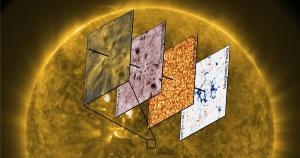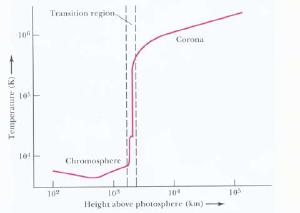Blog
Heat It Up
18 November 2019
 Big Bear Solar Observatory
Big Bear Solar ObservatoryThe Sun is the closest star to Earth, and as such, it is also the most studied. It has taught us much about how stars behave, but it still holds a few mysteries. One of these mysteries is just how the Sun’s corona gets so very hot.
The Sun can be categorized by different layers. Surrounding the interior is the photosphere, which is the layer that emits most of the sunlight we see. Above that is the chromosphere, which is less dense than the photosphere and emits bright line spectra. Above that is the diffuse corona.
All of the energy produced by the Sun is generated by nuclear fusion deep within the Sun’s interior. So it would make sense that the deeper you go into the Sun, the hotter things get. This is exactly what you see with the photosphere. The deeper you go into the photosphere, the hotter it gets. This temperature increase is why the edge of the Sun looks slightly darker than the rest, an effect known as limb darkening.
 Janet Sheung
Janet SheungOne would assume, then, that the chromosphere should be cooler than the photosphere, and the corona should be even cooler than that. But it turns out the opposite is true. The lower region of the chromosphere is about 4,400 K, while the uppermost region is about 25,000 K. The corona gets even hotter, reaching temperatures of more than a million K.
How is that possible? It’s been thought that it has to do with the Sun’s strong magnetic field interacting with charged particles in the solar atmosphere. The Sun isn’t a solid, and it turns out the equatorial region of the Sun rotates faster than its polar regions. Over time, the Sun’s magnetic field twists up until it snaps back into alignment, releasing lots of energy. That energy is transferred to the corona, superheating it.
Recently a team made high-resolution images of the Sun, and they captured this process in action. By observing the different layers of the solar atmosphere and measuring the magnetic fields in the region, the team showed how it all works. When the magnetic field snaps back into place, jets of plasma known as spicules shoot out from the photosphere, carrying much of the released magnetic energy. Soon afterward, the corona in that region heats up as it captures the energy of the spicules.
So it seems one of the big solar mysteries is finally solved.